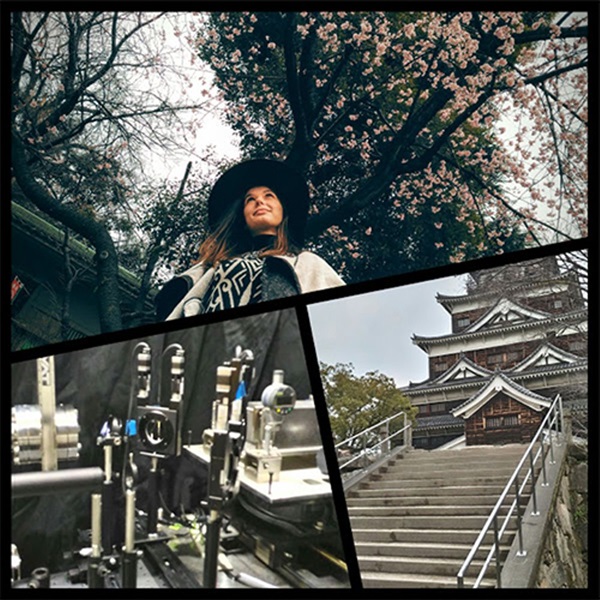Blog No.139
Author: Luliia Myrgorodska
After almost an entire "Game of Thrones" season, my plane was finally landing in the Land of the Rising Sun, a part of the world where people drive on the left-side of the road and eat raw fish with chopsticks... It is also a country with a global reputation for great inventors and scientific innovations. This is where my one-month project on the homochirality of life started. There actually are several reasons as to why I came to Japan, aside from sushi, karaoke, and onsens. First and foremost, it is ELSI itself which provides excellent opportunities to scientists all over the world to collaborate on the topic of origin of life. The second reason was the nature of my research project that required a spin polarized electron source that happened to be in the Institute for Molecular Science (IMS) facility near by Nagoya.
It was a complex collaboration with several Japanese universities involved: IMS (Higashi-Okazaki), HiSor synchrotron radiation source (Hiroshima), Yokohama National University (Yokohama), and ELSI (Tokyo) itself. I am sincerely grateful to the ELSI Origins Network (EON) program and staff for making my project possible. I would like to especially acknowledge Ayame Okuyama and Kyoko Akiyama for their great support and assistance with the paper work. Moreover I would like to thank Jim Cleaves for welcoming me in his group.
If one would ask me to describe ELSI in two words, they would be "international" and 'interdisciplinary'. You can find all kinds of subjects, from paleobiology, geophysics, planetary science, to theoretical physics being covered there. All of them are working to elucidate the mystery of how life appeared on our planet Earth. I was surprised with the diversity of disciplines as well as its scientific community. ELSI is not something you would expect of a Japanese institution: it has lots of group meetings, seminars, lunch talks, and discussion groups. Everyone can share their expertise and ideas and learn something new, sometimes useful collaborations emerge as a result of such activities.
As a part of my project I traveled across Japan from Hiroshima where I produced my samples, to Nagoya where they were irradiated. We were looking for an excess of left-handed or right-handed molecules in irradiated samples, by this trying to solve a puzzle of homochirality of life. Some samples were analyzed in ELSI, others have traveled with me back to France, where they will be subjected to multidimensional gas chromatography. During my visit, I also had an opportunity to give talks in Yokohama National University and JAMSTEC (Japanese Marine Agency).
Overall I can describe my experience as nothing but amazing. When my visit came to a close, I traveled back to my home institution carrying with me some quarts plates with irradiated sugars and amino acids as a souvenir of my one month stay in Japan.

